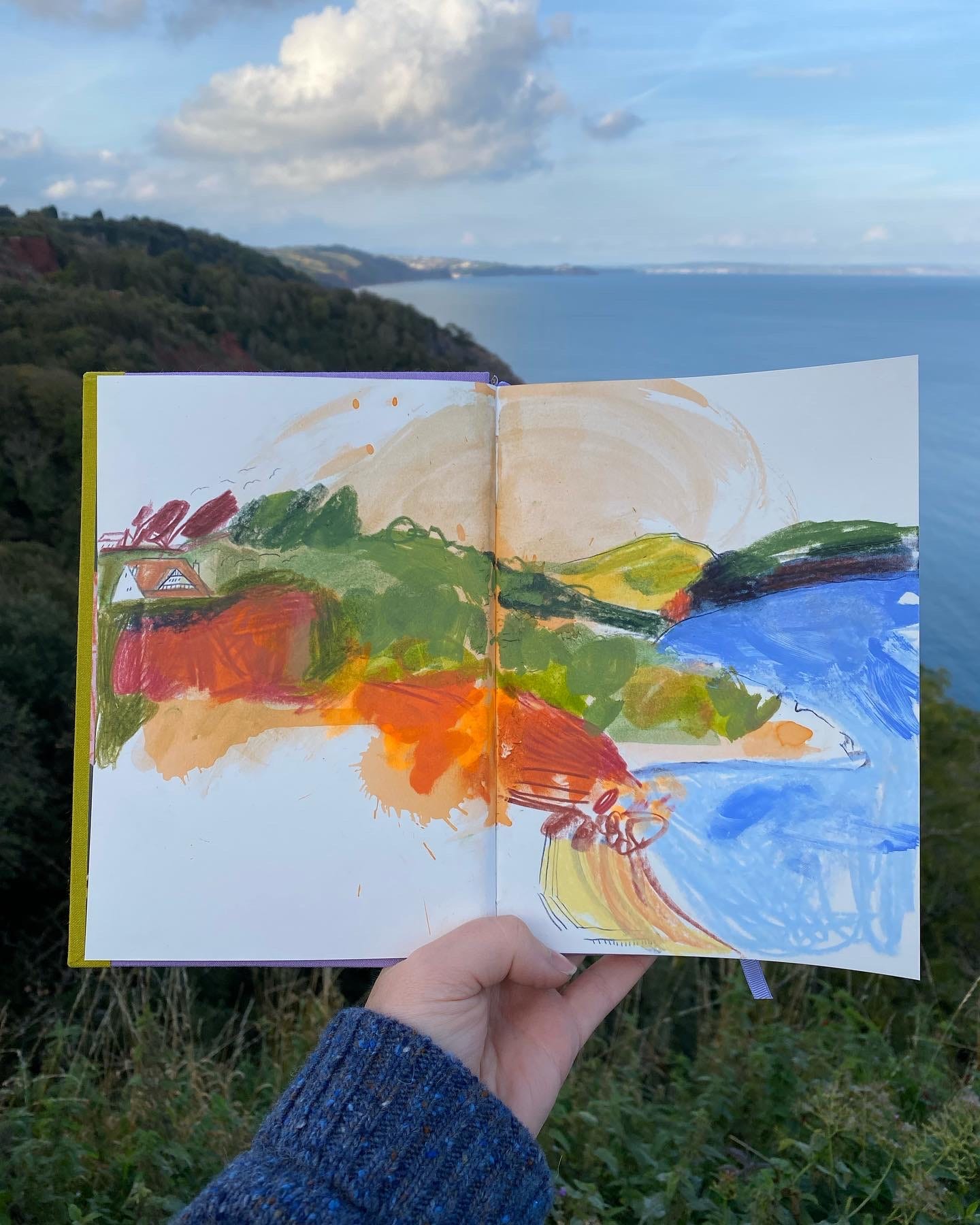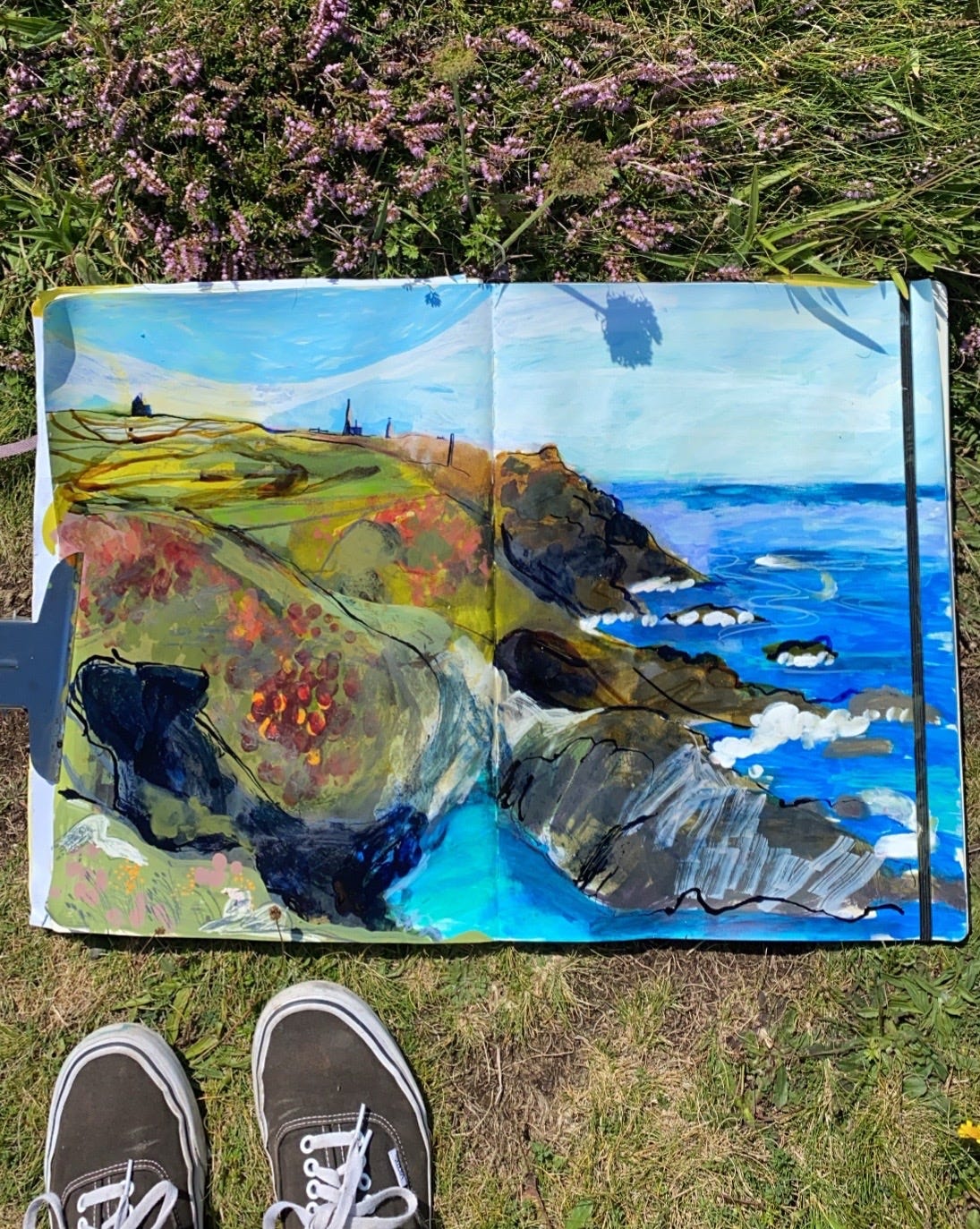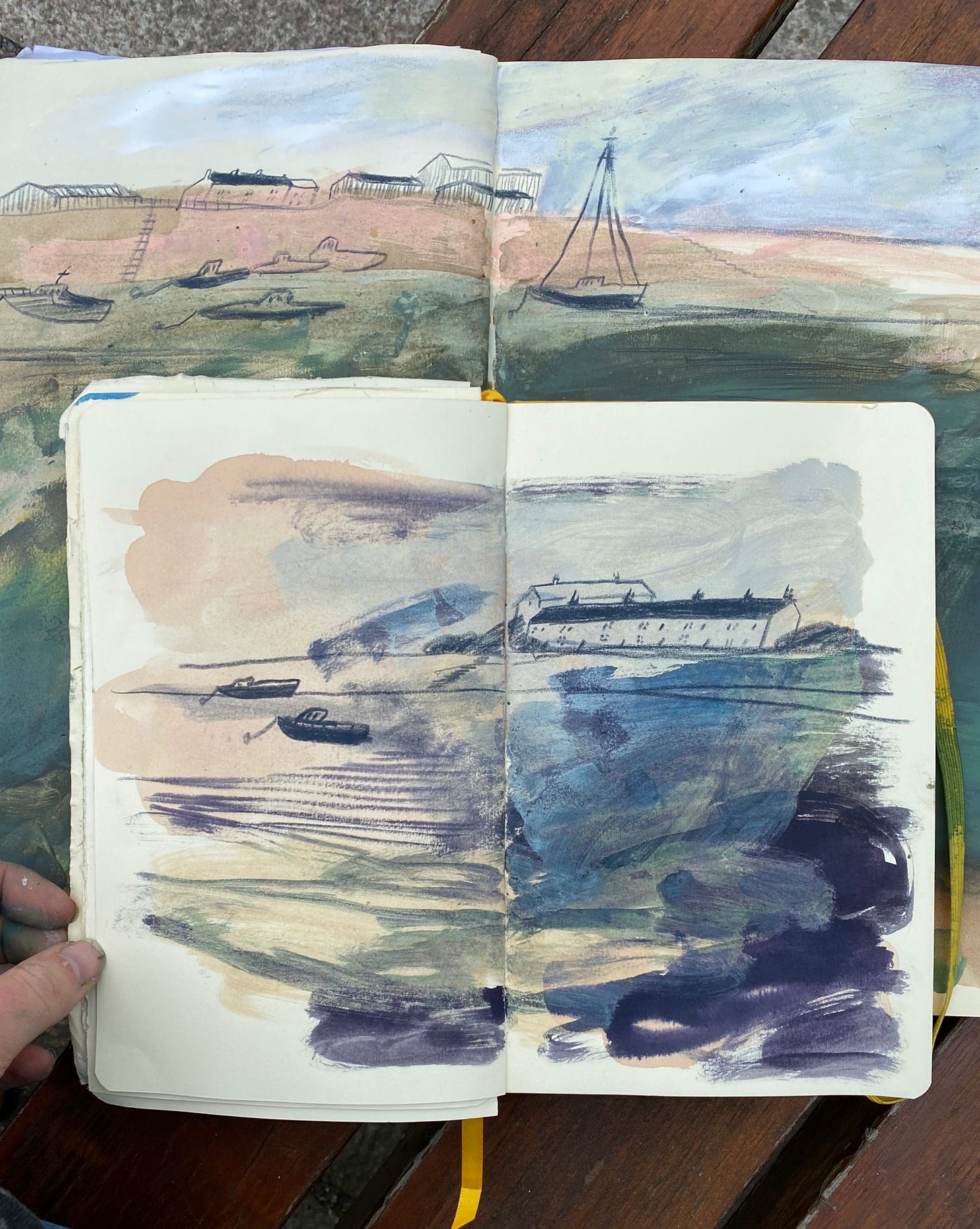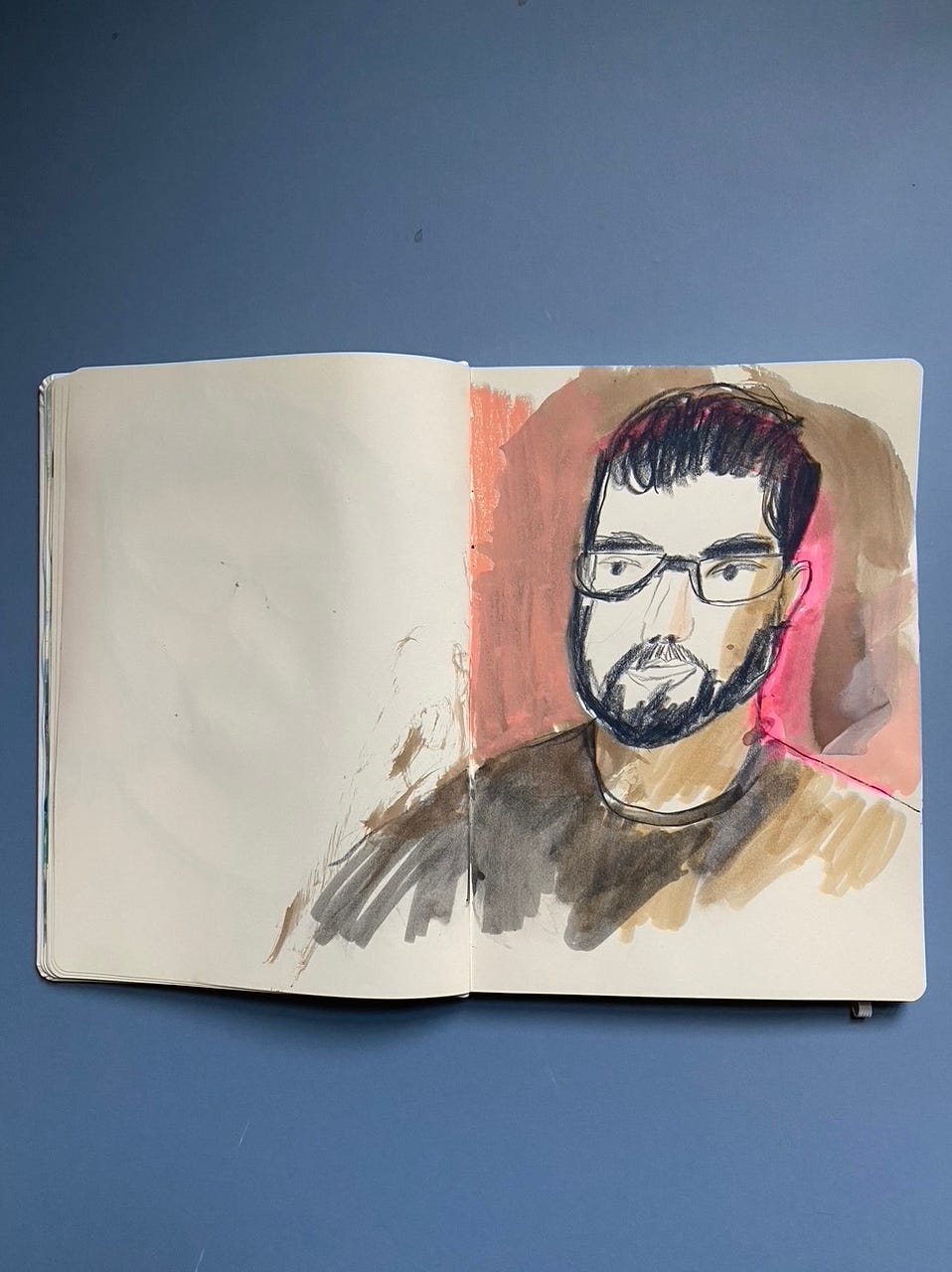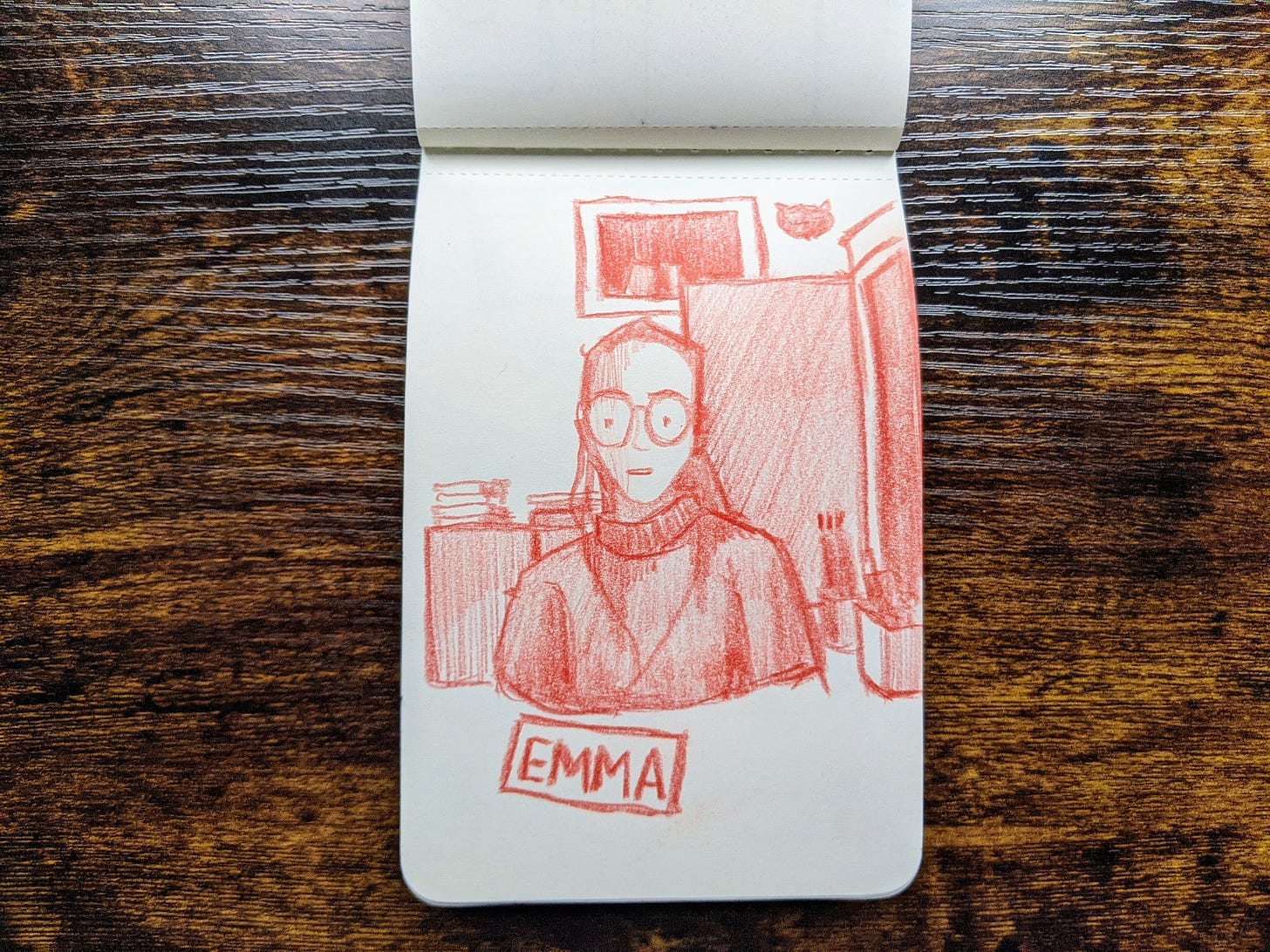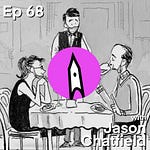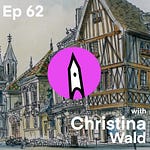👋 Hello, Insiders!
This week, I released a fascinating chat with UK-based artist Emma Carlisle. I hope you’ve heard it and also enjoyed it. I learned about Emma’s work when I asked my Instagram followers to suggest new artists for me to speak with. Emma was one of 4 artists I took note of because I was blown away by the uniqueness of her style.
The audio in this post is a Post-Script conversation we had after our main recording. You can listen to it even if you haven’t heard the episode yet!
💭 Why I reached out to Emma
(and, by extension, how I shape this podcast.)
🖌 Her art immediately struck me as interesting.
Not only is Emma a wonderful artist, I found her work immediately interesting. Those two things don’t always go together.
I have found it useful to tune into these subconscious signals. I use them to guide my work in various ways, and to trigger the more conscious, more deliberate thinking-process.
Allow me a short digression to explain how this works (for me).
It is a model I read about recently in Daniel Kahnemann’s Thinking Fast and Slow. Dividing our mind into System 1 and System 2 is a useful way to understand subconscious and deliberative processes. System 1 can be thought of as instinct, intuition, and natural preferences. It is immediate but approximate. System 2 is the more explicit, step-by-step process of thinking we follow for complex goals. It takes time and costs attention, but is more precise. System 1 is informed and improved by things we do using System 2. System 2 sends work to System 1 when it wants to save time, trading energy for a less precise but nevertheless useful conclusion. Sometimes, however, System 1 reaches conclusions that System 2 could not have done. Then the job of the person is to back-calculate - or reverse-engineer - the answer thrown by System 1 in order to learn how they themselves arrived at it.
I do one such thing when I find some art immediately interesting. Why did it strike me as so? What was eye-catching about it? What can that teach me about myself as an artist and as an observer?
I also use it when I pick a scene to draw purely out of instinct. As I draw, I try to answer why I chose this scene? Which element clicked for me and in which way? The reverse-engineering happens in the process of drawing. I start to understand why my System 1 selected it. Often these are the drawings that come out to be the most beautiful, and are the most appreciated by my audience as well. My System 1 teaches my System 2 to be a better artist. But it is System 2 that builds the knowledge base for System 1 to subconsciously tap into.
It is a beautiful symbiotic relationship.
I needed to see only one drawing by Emma to know that I wanted to speak with her!
I wanted to know how it was made. I wanted to know what she was looking at and why. I wanted to know what caused this explosion of colours on the page. I could tell there was a lot of play in these artistic process, and I wanted to understand how she had achieved this wonderful relationship with her paints and her sketchbooks.
🎭 Her story fascinated me.
The other big motivation for picking a guest is that I want to hear interesting stories. I came to urban sketching with the goal of becoming a better cartoonist. As a self-taught artist, it has been my most effective way to learn to draw. In my case, the cartooning has been relegated to a rarely indulged past-time, and instead I make art to make art. So I am fascinated to know what brings other artists to this practice. What do they find in their environment to spark this interest? Or does it come from a different kind of need in their lives?
Emma gave a wonderful interview in which she shares her struggles with working as an illustrator. She spoke about suffering from anxiety and burnout. She shared how urban sketching (or location drawing) helped her revitalize her love for art again.
I wanted to learn about this incredible journey. In our conversation, Emma takes me through the evolution of her art over those years, where the style changed, when the observation began, and how the colours crept into the page. It’s a wonderful story, and I’m delighted that we could have this conversation.
For a lot of urban sketchers, sometimes urban sketching is not the end goal. Urban sketching is one of several paths to reach a broader artistic goal. Perhaps that goal is to learn specific skills, perhaps to become better observers. In some cases, I have found the goal is to just unwind, to draw and paint without larger ideas. These goals make for interesting, diverse stories.
With this in mind, if you know of an urban sketcher or artist who draws from observation, whose work you enjoy, and who you think would make for an interesting guest on the show, please recommend them to me!
🎙 Post-Script with Emma Carlisle
In the audio post-script above, Emma and I unwind from our long conversation while drawing portraits of each other. Here are some of the subjects we touch upon -
🗨 What is the role of a creative consultant in Emma’s life? What makes for a useful and good creative consultant, and how does an artist recognize the need for having one?
🗨 What does it mean to make a ‘bad drawing’? We talk about how bad drawings are actually a very good thing.
🗨 Emma’s plans with self-publishing her future work.
🗨 Nishant shares some good reasons to draw quickly, even if this isn’t a goal for the artist.
🗨 Emma talks about her Patreon, how she has understood its usefulness and shaped it over time.
🖼 Our Drawings!
Here are the portraits we drew of each other. As you can see, Emma made a wonderful drawing which, for inexplicable reasons, does not like very much.
I’m taking it a little easy over this month and next. The end of the year is a time when many freelance artists accelerate and redouble their efforts. So I wonder if this is the right decision. But, I tell myself, becoming independent means being independent about exactly such things. I am home after nearly 3 years, seeing people I have not been able to meet for a long time. I want to forget my schedule for a bit.
I have no big episode recordings planned at the moment. I will start to email potential guests this week, to record in late January. I hope they will agree. 😁
I have many ambitious plans for the coming year. But I’m stopping myself from already getting into them. A break should be a real break. I want to simply be where I am, and observe the world as it presents itself to me. This means the SneakyArt will continue, and that these newsletters will keep coming to you.
Here are some fun things coming your way over December and January -
Round II episodes - these are second conversations with guests who have appeared on the show before. I have recorded with both Paul Heaston and Shari Blaukopf already, one of them will release as an Insider Post next week.
Sights and sounds of India - It may not become a passage for SneakyArt of Vancouver, but who’s to say it cannot? A self-published book can be anything I like, I remind myself! Some of that this month as well.
I am the guest this time - A lot of listeners have commented that I don’t share enough about my own life in the SneakyArt Podcast. This was a conscious decision, because I didn’t want to center everything around myself. But over the last couple of weeks I have recorded conversations with two other podcasts, both of which are strikingly different from one another. One is a mix of Hindi and English, and the other is in English. I talk at length about the things I think about, share my life’s journey, and speculate on the things that most excite me about the future of the creator economy.
This is Insider Post #13, and thirteen is supposed to be an unlucky number. But I like to push against odds, even the imaginary ones. So in this post I also make a request of you, dear Insiders. If you like my work, consider gifting a subscription to the SneakyArt Insider Club to a friend, family member, or colleague, who might enjoy it as well. Such a gift would spread in three directions at once - the joy to the giver, the delight to the receiver, and the validation to the creator. What better way to close this year?
Thank you for your time and attention, dear Insiders. And thank you again for your support. You help to keep my work going, and I’m glad to have you on this journey with me. See you next week!




